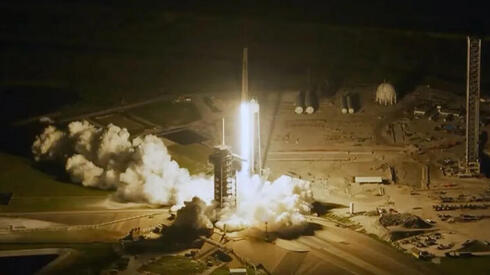Axiom Space’s fourth private mission, Ax-4, launched on June 25 after a series of delays. On June 26, the Dragon spacecraft successfully docked with the International Space Station (ISS), where its four crew members joined the seven astronauts already aboard the station. This Dragon spacecraft carries a new name — Grace — as announced at the time of separation from the upper stage.
The mission doubles the number of official Indian representatives to have flown in space. Until now, the world’s most populous country had sent only one astronaut — more precisely, a cosmonaut – Rakesh Sharma, who spent a week aboard the Soviet Salyut 7 space station in 1984 as part of Soviet-Indian cooperation. Now, 39-year-old Indian pilot Shubanshu Shukla joins that legacy as a crew member of this private mission and the first Indian citizen to reach the International Space Station.
5 View gallery
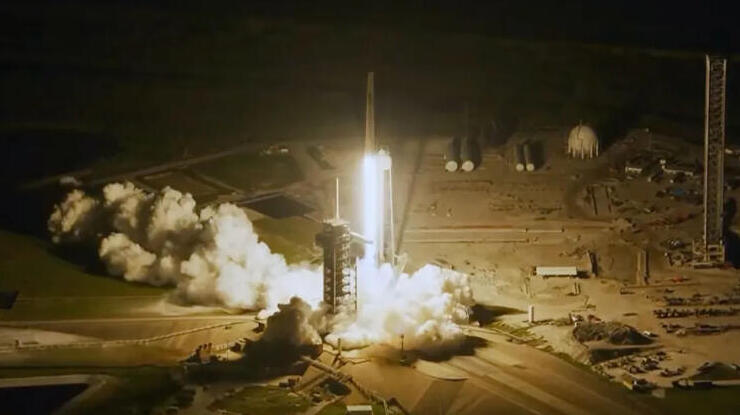
Preparing to enter a cooling phase until next year. An illustration of the spacecraft during its close approach to the Sun
(Photo: Axiom Space)
In addition to Whitson, the crew includes representatives from national space agencies, each from a country that previously sent only one astronaut to space during the Soviet era. Engineer Sławosz Uznański-Wiśniewski of the European Space Agency becomes Poland’s second astronaut, while 35-year-old engineer Tibor Kapu is Hungary’s second official astronaut. Hungary’s first unofficial representative was space tourist Charles Simonyi, a Hungarian-American entrepreneur who flew to the ISS twice — in 2007 and 2009 — on privately funded missions.
Hungary is also collaborating in the continuation of Israeli research focused on detecting lightning sprites and other atmospheric phenomena. In experiments led by Prof. Yoav Yair of Reichman University, astronauts attempt to photograph these colorful, spectacular bursts of light that occur above thunderstorms.
Though massive in scale, they often last only fractions of a second. Capturing them requires astronauts to aim their cameras with exceptional precision at active storm systems. This is made possible by data provided by Yair, who cross-references detailed storm forecasts with the space station’s orbital path, enabling him to direct the astronauts exactly where to point the camera at any given moment.
The Rakia Mission later became a public benefit corporation and helped facilitate the inclusion of the experiment in Axiom’s subsequent private missions. While the experiment ended in disappointment during Ax-2, it yielded interesting results in Ax-3. For Ax-4, it is being conducted in collaboration with Professor József Bór of the Hungarian Institute of Earth Physics and Space Science.
5 View gallery
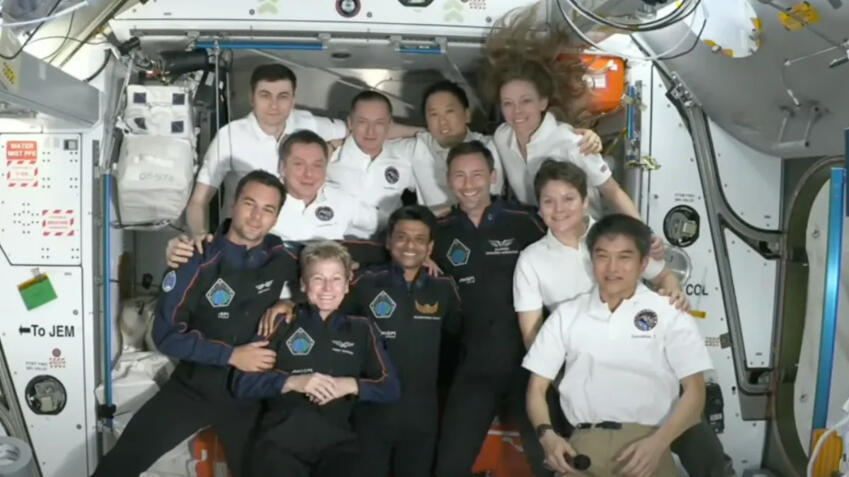

Preparing to enter a cooling phase until next year. An illustration of the spacecraft during its close approach to the Sun
(Photo: Axiom Space)
“Kapu is the astronaut designated to lead the experiment, but we conducted a video training session with the entire crew, and everyone expressed interest in participating and capturing these phenomena,” Yair told the Davidson Institute website. He and his colleagues supply forecast data to the astronauts and hope the crew will find time to document as many events as possible. “We’ve already recorded dozens of brief electrical discharges, but we’ve yet to capture Gigantic Jets — massive, high-temperature lightning events,” he noted.
He also added that the camera used in the experiment doesn’t remain on the space station but travels with the astronauts on each mission. “That’s ideal, since it has had minimal exposure to cosmic radiation, which helps maintain high image quality.” The Israeli experiment is one of about 60 scientific and medical experiments planned for the AX-4 crew during their approximately two-week stay aboard the ISS.
“The Rakia Mission has been supporting the Hungarian space mission over the past two years,” added Hadar Vernik Shalev, CEO of the Rakia Mission. “We advised them on astronaut selection, candidate screening, and the setup of their mission control room.”
The mission of Indian astronaut Shubanshu Shukla is generating widespread public interest across the country, which is also developing its own crewed spaceflight program. Sending a representative to the ISS is seen as an important first step.
“As part of Rakia’s efforts to support space missions, we partnered with CMS School in Lucknow, northern India — Shukla’s alma mater,” said Hadar Vernik Shalev to the Davidson Institute website. “We assisted in developing educational content, translating it into local languages, and establishing a mission control room and visitor center. We’re one of the few organizations globally with the expertise to support missions of this kind, and from our perspective, this collaboration with India is just the beginning.”
5 View gallery
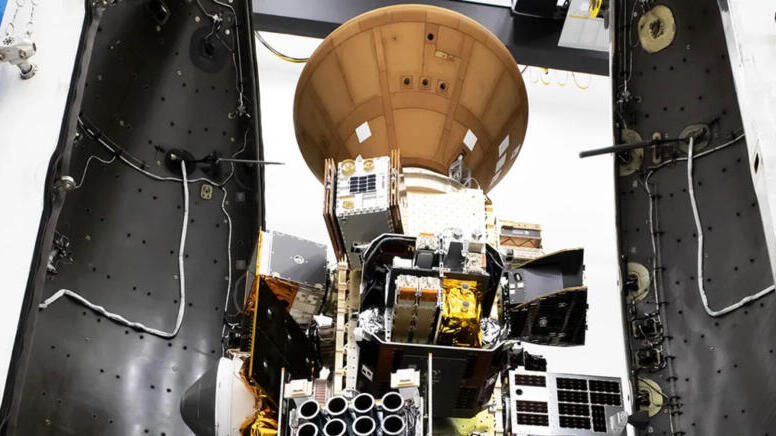

Preparing to enter a cooling phase until next year. An illustration of the spacecraft during its close approach to the Sun
(Photo: SpaceX)
Just under three hours after launch, Mission Possible separated from the rocket as planned and began a controlled re-entry over the northern Pacific Ocean. At that point, the spacecraft was operating normally, and mission control successfully activated several onboard experiments for in-space execution.
The conical capsule, weighing 1.6 tons, survived atmospheric re-entry. Following a brief, expected signal loss caused by the intense heat and plasma buildup during the spacecraft’s re-entry, contact was reestablished. However, communication was lost again just minutes before the scheduled splashdown. The company suspects a malfunction in the parachutes may have caused the spacecraft to crash into the ocean.
“We apologize to all our clients who entrusted us with their payloads,” the company said, adding that an investigation is underway into the root causes of the spacecraft’s loss.
The company also stated that once findings are reviewed, it plans to move forward with a follow-up mission as soon as possible. Mission Possible was The Exploration Company’s second space mission. A year earlier, it launched a smaller demonstration craft that also faced setbacks — due to a second-stage malfunction during the maiden launch of the Ariane 6 rocket, the spacecraft became stranded in orbit and was unable to attempt atmospheric re-entry.
The spacecraft lost last week was a prototype of Nyx, a vehicle the company is developing for orbital cargo transport. On June 16, at the Paris Air Show, the company also announced plans to develop a crewed version of the spacecraft.
NASA’s Parker Solar Probe has completed another close flyby of the Sun, matching its previous flyby records for the closest approach to our star from December 2024 and March 2025, for both proximity and speed. The spacecraft came within just 6.2 million kilometers of the solar surface and reached a speed of approximately 690,000 kilometers per hour — equaling its own record for the fastest human-made object.
5 View gallery
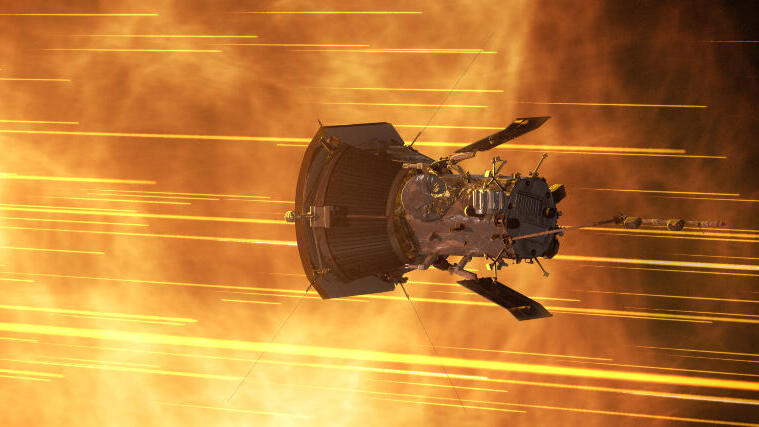

Preparing to enter a cooling phase until next year. An illustration of the spacecraft during its close approach to the Sun
(Photo: NASA)
This marked Parker’s 24th solar flyby since its launch in 2018 — and the final one in this phase of the mission. Last week, mission controllers confirmed a successful pass, with all instruments fully operational, its heat shields enduring extreme temperatures exceeding 900°C. Parker will now shift to a more distant orbit, with no close passes planned until a decision about the mission’s next phase is made sometime next year.
The data collected during the spacecraft’s flybys of the Sun are used to study solar wind and solar flares—phenomena that affect satellite operations, spacecraft systems, and astronaut health in space. Gaining a better understanding of these events, along with the development of the ability to predict powerful solar outbursts, is critical for planning and advancing deeper space missions, to the Moon, Mars and beyond.
“Parker Solar Probe remains in excellent health, with both the spacecraft and its instruments ready to continue their groundbreaking mission,” said Arik Posner, Parker Solar Probe program lead scientist. “The spacecraft will keep exploring the solar atmosphere as the Sun enters the declining phase of its 11-year cycle, providing a unique opportunity to study how solar activity evolves and shapes the heliosphere during this pivotal period.”
The new U.S. observatory named after astronomer Vera Rubin has released its first public images, showcasing its capabilities after entering a trial phase about two months ago. Located in Chile and built over nearly three decades at a cost exceeding one billion dollars, the Vera Rubin Telescope’s debut images reveal its exceptional imaging quality.
5 View gallery
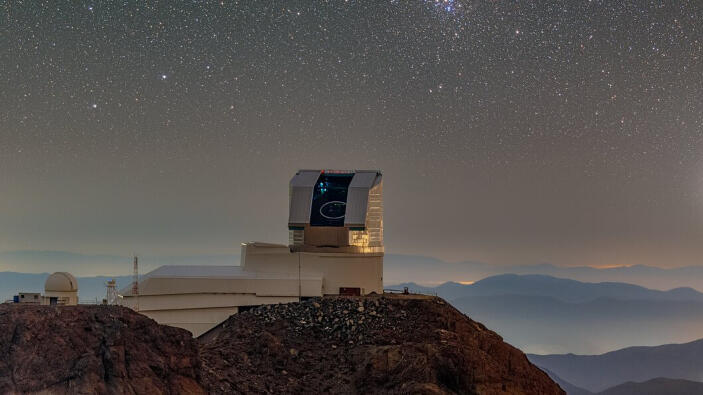

The world’s largest digital camera that will help unlock the secrets of the universe. The Vera Rubin Telescope at the summit of Cerro Pachón in Chile
(Photo: RubinObs/NOIRLab/SLAC/NSF/DOE/AURA/P. Horálek (Institute of Physics in Opava))
Equipped with an 8.4-meter primary mirror—not particularly large by today’s standards—the telescope’s true advantage lies in its state-of-the-art camera, roughly the size of a small car and weighing about three tons. Each image it captures is 3,200 megapixels in size, making it the world’s largest digital camera.
The telescope features an exceptionally wide field of view—about 10 square degrees. Each image covers a portion of the sky roughly 45 times larger than the full Moon. Designed to take around 1,000 images per night, the telescope can survey the entire southern sky every three to four nights. This continuous, wide-field monitoring enables scientists to track changes and ongoing processes, detect previously unknown celestial objects, and, when needed, direct other telescopes toward them for follow-up observations.
Researchers believe the telescope will identify more stars and planetary systems than any previous instrument, and will also significantly enhance planetary defense by detecting numerous asteroids, including those that could pose a future threat to Earth. Additionally, the observatory will contribute to research on cosmic mysteries such as dark matter and dark energy.
The Vera Rubin Observatory will operate as part of a broad international scientific collaboration, working with a range of international partners. Among them is Israel’s ULTRASAT space telescope project, in development at the Weizmann Institute of Science and slated for launch in about two years.
Like the Vera Rubin Telescope, ULTRASAT will have a wide field of view and repeatedly scan large portions of the sky—though in ultraviolet light, rather than in visible light, making the two projects scientifically complementary. As part of the partnership, U.S. scientists will gain access to ULTRASAT’s data, and Israeli researchers will be able to use data from the Vera Rubin Telescope
